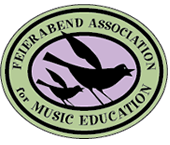Transitioning from unison to part singing, melody to harmony, and aural to visual, can be
challenging for upper elementary and middle school students. Proven strategies for
developing part-singing by ear and eye are critical for the preparation of choral singing in
the later grades. But where, and how to begin? This lively participatory session will address
the part-singing challenges that occur in the development of part-singing competency.
Participants will be guided through the sequential steps necessary to guarantee success.
This sequenced approach begins first with the ear, utilizing bass lines, partner songs, vocal
chording, rounds and canons to help strengthen aural recognition, and then, by eye,
through sight-reading, utilizing bass lines and two-part choral arrangements. Participants
will be actively engaged throughout the presentation, experiencing each component. A
handout and choral octavos will be provided. When we introduce students to an
appropriate sequence of learning, they can be on their way to not only sing with
understanding and joy during their school years, but will have the necessary skills to sing
independently, and with others, throughout their life.
